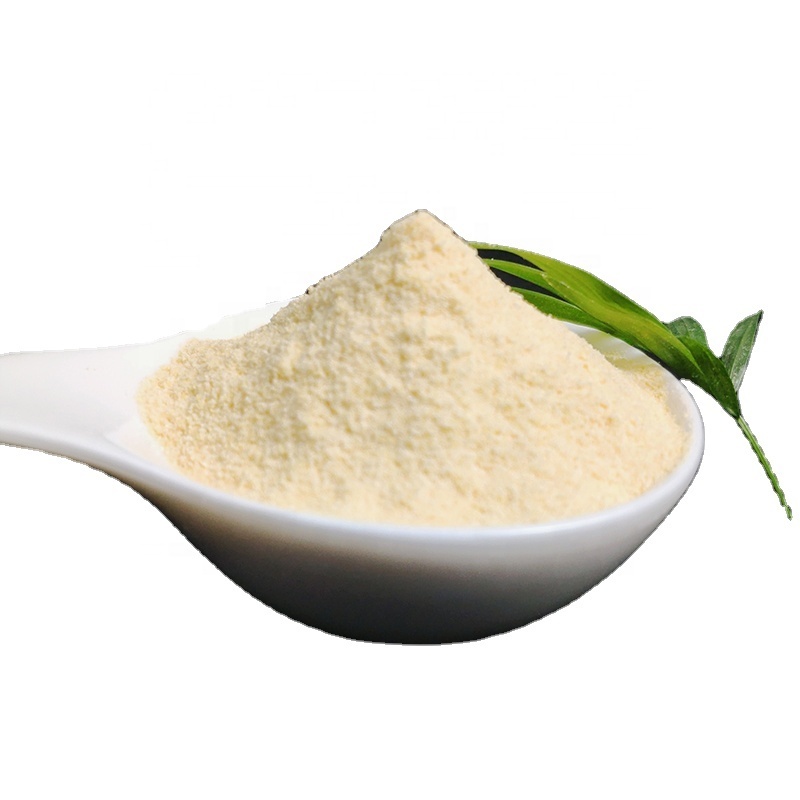-
Categories
-
Pharmaceutical Intermediates
-
Active Pharmaceutical Ingredients
-
Food Additives
- Industrial Coatings
- Agrochemicals
- Dyes and Pigments
- Surfactant
- Flavors and Fragrances
- Chemical Reagents
- Catalyst and Auxiliary
- Natural Products
- Inorganic Chemistry
-
Organic Chemistry
-
Biochemical Engineering
- Analytical Chemistry
-
Cosmetic Ingredient
- Water Treatment Chemical
-
Pharmaceutical Intermediates
Promotion
ECHEMI Mall
Wholesale
Weekly Price
Exhibition
News
-
Trade Service
[ As of March 17, the CBOE Crude Oil Volatility Index is up 80%
so far this year.
] Oil prices have been more volatile since the beginning of March than they were at the beginning of the pandemic in 2020 and at the beginning of the financial crisis in 2008
.
Before the escalation of the Russia-Ukraine conflict, Brent crude oil futures were around $97, and by March 7, Brent oil once rose to the peak level of $139 / barrel, and then fell back to the pre-conflict level last week, and finally rose more than 9% to close at $107.
93 / barrel
in two trading days last Thursday and Friday.
]
After the outbreak of the Russian-Ukrainian conflict, the volatility of international oil prices soared
.
In the past two weeks, international oil prices have reached about
$40 per barrel in both directions.
Under such violent volatility, many traders lament that it is becoming more and more difficult to trade, so they reduce their positions and wait and see, which has caused the liquidity of the crude oil futures market to plummet.
At the same time, increased volatility has also led to increased margin requirements for brokers and clearing houses, which has depleted liquidity, forcing many traders to seek help
from private equity institutions and central banks.
Some analysts are even worried that the next liquidity crisis could occur in commodity markets
.
Volatility is soaring and is expected to continue
As of March 17, the CBOE Crude Oil Volatility Index is up 80%
so far this year.
Oil prices have been more volatile since the beginning of March than they were at the beginning of the pandemic in 2020 and at the beginning of the financial crisis in 2008
.
Before the escalation of the Russia-Ukraine conflict, Brent crude oil futures were around $97, and by March 7, Brent oil once rose to the peak level of $139 / barrel, and then fell back to the pre-conflict level last week, and finally rose more than 9% to close at $107.
93 / barrel
in two trading days last Thursday and Friday.
Bill Farren Price, a director at energy consultancy Enverus, said: "Oil price volatility is closely related
to the game between large crude oil producers.
Supply risk is one thing, questioning demand is another
.
The next important indicator will be Europe's attitude
towards Russian energy sanctions and the Iran nuclear talks.
”
Analysts widely expect the oil market to remain
volatile due to a combination of factors, including the Russia-Ukraine conflict, the Iran nuclear deal, inflation and interest rate hikes hitting demand, and uncertainty about coronavirus-related developments.
Rob Thummel, a portfolio manager at Tortoise, said the oil market remained fundamentally tight, but "until there is a clearer picture of Russia's ultimate goal, oil prices will continue to be heavily influenced by sentiment and volatility," with at least a $20 geopolitical premium currently in
oil prices.
Morgan Stanley analysts Martijn Rats and Amy Sergeant bluntly said in the research note, "It is an understatement to describe the recent movement in oil prices as volatile
.
" Morgan Stanley now expects an average price target of $120/b for the third quarter of this year, up $20 from its previous forecast
.
This week, there is still a mix
of bullish and short factors in the crude oil market.
Positive factors include recent warnings from the International Energy Agency (IEA) and the possibility of more sanctions against Russia at this
week's NATO summit.
The IEA said over the weekend that the oil market was in a "state of emergency" and could get worse
.
The agency's monthly report, released last week, noted that the potential loss of Russian oil supplies "cannot be underestimated.
"
Meanwhile, US President Joe Biden will visit Europe this week for the NATO summit
in Brussels, Belgium, on March 24.
Foreign media previously quoted people familiar with the matter as saying that US and European officials have been discussing new measures
that may be finalized at the NATO summit.
These measures may include a new round of sanctions against Russian crude oil oligarchs, further restrictions on imports of Russian energy products, etc
.
The negative factors for oil prices are mainly the expected conclusion of the Iran nuclear deal within 48 hours and Iran's intention to increase crude oil and condensate production and exports
.
According to foreign media reports, a senior representative involved in the negotiations revealed that the Iran nuclear deal could be reached
within 48 hours.
Reviving the nuclear deal would pave the way for an end to sanctions against Iran, allowing Iran to increase its oil exports
to Western countries.
Even if the Iranian nuclear agreement is restored, according to Xinhua News Agency, Iranian Oil Minister Javad Ogi told Iranian state television on the 19th that the Iranian parliament decided to increase the maximum daily export volume from 1.
2 million barrels to 1.
4 million barrels, and the Iranian oil ministry "will do its best to achieve the level set in this budget"
.
Augi also said Iran's oil ministry intends to increase crude and condensate production capacity from 3.
7 million to 4 million barrels per day to 5.
7 million barrels per day, but he did not disclose a timetable
for achieving that goal.
Overall, the biggest factor affecting the crude oil market is still the Russia-Ukraine conflict
.
Podolyak, adviser to the director of the Office of the President of Ukraine, said on March 20 local time that a new round of negotiations between the Russian and Ukrainian delegations will begin
on the morning of the 21st local time.
Liquidity plummeted, making margin calls even worse
Increased volatility is often a sign of reduced market liquidity, as both bullish and bearish investors are less willing to take on new risks, so they reduce their positions until the trade gradually calms down
.
Indeed, since the escalation of the Russia-Ukraine conflict, traders have been cutting the open interest rate on crude oil futures amid wild volatility to avoid losses
due to extreme price fluctuations.
Traders' interest in trading crude oil futures fell to a 7-year low
.
According to the Futures Exchange, portfolio managers' bullish bets on Brent crude fell by the most
in years during the week ending March 8.
The spike in oil prices and increased volatility have caused many hedge funds and speculators to sell long or bullish positions
.
Hedge funds and fund managers dumped the equivalent of 142 million barrels of oil in the six most important oil-related
futures and options contracts in the week ending March 8, according to the Intercontinental Exchange (ICE).
The sell-off was mainly due to investors abandoning existing long bullish positions to 114 million barrels, rather than adding new bearish short positions
.
According to records published by ICE Futures and the Commodity Futures Trading Commission, the sell-off for the week was the 11th highest in 469 weeks since March 2013, in the 98% percentile
.
Specifically, fund managers sold 97 million barrels of Brent crude, 23 million barrels of European diesel, 13 million barrels of U.
S.
gasoline and 11 million barrels of U.
S.
diesel, and bought only 2 million barrels of WTI crude from
the New York Mercantile Exchange and ICE.
Open interest in six energy futures — Brent, WTI, RBOB gasoline, heating oil, gasoline and European natural gas — reached a five-and-a-half-year low on March 11 as "rising volatility forced investment managers to reduce their exposure and traders sharply reduced their position size
," said Ole Hansen, head of commodity strategy at Saxo Bank.
”
Gary Ross, a hedge fund manager and senior oil consultant at Black Gold Investors LLC, bluntly said, "The volatility is too much to bear.
"
Given the volatility, the crude oil futures market is currently not tradable
.
”
At the same time, increased volatility has led to increased margin requirements from brokers and clearing houses, making futures and options positions increasingly
expensive to maintain.
This extreme volatility and rapidly dwindling liquidity is similar to trading conditions in the second quarter of 2008, when oil prices climbed to record highs in the first half of July before plunging
.
The huge margin requirements have put some large energy companies under pressure
.
Recently, after receiving billions of dollars in margin calls, Trafigura, one of the world's top five oil traders, had to seek financing
outside its usual pool of banks.
According to foreign media reports, Trafigura Group has negotiated with Blackstone to invest about 2 billion ~ 3 billion US dollars in preferred shares, but has not reached any agreement
.
The company has also approached private equity firm Apollo Global Management, BlackRock and KKR to seek new financing
.
Earlier in March, Trafigura had just raised $1.
2 billion in revolving credit facilities from a consortium of banks to increase its financing pool to counter spikes
in oil and other commodity prices.
In fact, not only the oil market, but the entire commodity market has shown this situation
after the escalation of the Russia-Ukraine conflict.
The Federation of EU Energy Traders (EFET), which includes Trafigura, Vitol, Shell and BP, recently warned that large swings in commodity prices triggered by the situation in Russia and Ukraine could lead to further deterioration of the situation, with European energy traders severely weakening their ability to access additional liquidity and, in some cases, even running out of cash
.
To this end, it called on the ECB to "provide time-bound emergency liquidity support"
.
Peter Styles, executive vice chairman of EFET's board, noted that "the most important objective is to keep the markets for futures and other energy derivatives contracts open in an orderly manner
.
Gas producers, European gas importers and power suppliers must retain the opportunity to
hedge their positions.
”
The turmoil in the futures market caused by the Russia-Ukraine conflict is most evident
in the nickel market.
Nickel is an important export product
of Russia.
The global nickel market closed for a week after the surge in nickel prices, making it difficult for investors who shorted nickel to meet further margin calls from
banks.
In fact, Credit Suisse's star analyst Zoltan Pozsa had long warned that the latest liquidity crisis could occur in commodity markets
.
He said that after the conflict between Russia and Ukraine, the originally unified global commodity market is being fragmented, and the price of Russian commodities has fallen to form a discount, while the prices of non-Russian similar commodities are rebounding
sharply.
This will cause the liquidity level of the commodity pool to soar, and the liquidity of the financial system will continue to be siphoned into the commodity market
.
"In the liquidity crises of 1998 (LTCM bankruptcy due to Russian bond defaults), 2008 (subprime mortgage crisis, shadow banking) and 2020, it was all because in a highly leveraged market, collateral suddenly went wrong, which led to the drying up of liquidity and eventually caused a crisis
.
" "Today's Russian commodities are like subprime mortgage products in 2008, while non-Russian commodities are like U.
S.
Treasuries
in 2008," he said.
One price plummets, the other price spikes, and no matter which side you're on, both require a margin call, and the corresponding margin size will be chilling
.
”
However, Barclays strategist Joseph Abate believes that the reality will not be so bad, because the margin called back into the financing ecosystem in the form of repos and bank deposits is still not enough to cause a surge in financing pressure and a liquidity crisis
.







